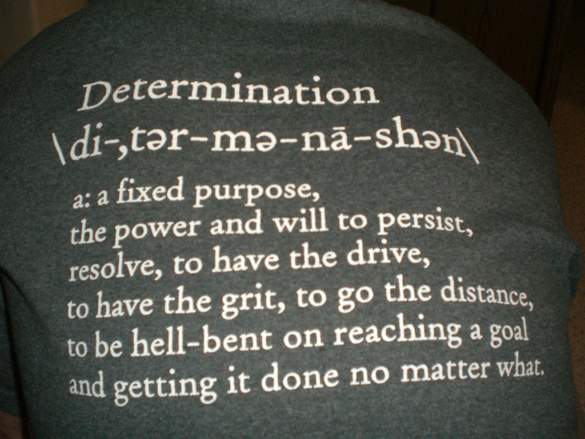New Years’ Resolutions tend to be the butt of every January joke, because few of us carry our goals forward even into February. Those of us who make it to March are an elite and ridiculed few, and anyone found any further along in the year with their goals intact are likely just OCD anyways.
There’s definitely merit at heart behind New Years’ Resolutions. It’s just that patterns and rhythms are predictable and comfortable and not startling, and we very much like those kinds of things. Enacting ideas like quitting potato chips cold-turkey or vowing to roller-skate to work every day are typically uncomfortable when weighed against the ruts we’ve picked for ourselves.
But it’s hard to deny that most of us wouldn’t mind changing just a little bit. And most of us know exactly what those changes would be, because we’ve built up in our minds idealized versions of ourselves, and it’s these concepts that motivate us towards those changes. I want a healthier lifestyle, I want to spend more time at home, and I want to learn a language are all examples of the starting blocks of personal growth. The problem is, many of us never even leave the blocks, much less finish the race.
My end-of-the-year routine is typified by a paradox of self-pity and pompous parading—a stark contrast of where I traveled and what I accomplished against where I didn’t travel and what I didn’t accomplish. Overall, I’m exceptionally happy with my life: I have a great family and an awesome group of friends, I actually love both of my jobs, and I live next to some of the most famous surf breaks in the world. But I can still afford to invest in some personal development, and objective checklists like New Years’ Resolutions are important to me. But over time, my yearly resolutions are usually nebulous and often resemble each other (travel more, eat healthy, wash the truck once a month), repeating themselves into infinity and never giving me much opportunity to check them off the list.
That’s why I created a system for myself called Quarterlies. In short, it’s a goal-setting strategy that renews itself every three months. Instead of setting lofty goals into the far-reaching future, Quarterlies keeps the focus fresh and recent, providing quantifiable milestones that can be easily integrated into a weekly regimen. Think of it as a mental exercise analogous to saving spare change in a jar and counting it all up after ninety days.
For instance, a New Year’s Resolution might look like this: This year, I want to be more well-read. With the Quarterlies system, the goal becomes more specific, and can be broken up into more manageable chunks: This quarter, I want to read 500 pages of classic literature and 500 pages of nonfiction history. While there’s not really any way to measure “being well-read,” there is a way to count how many pages have been read (and, I might add, reading A Tale of Two Cities alongside Napoleon Bonaparte’s Biography could prove to be an incredibly enriching experience, as both are sure to present accounts—however based in reality they are—of the French Revolution). Even if the goal proves unreachable in the three-month period, the system refreshes every quarter and can be modified to suit the participant.
Here’s what my list looks like:
Every three months, I will:
• Read 1,000 pages of [literature, history, philosophy, theology, fiction]
• Learn how to cook 10 new dishes
• Write 15,000 words
• Sketch or draw 30 pages
• Put away $500 in savings
• Put away $500 towards travel
• Memorize 3 chapters from the Book of Psalms
• Complete one unit in foreign language studies on livemocha.com
Don’t get the wrong impression, as this isn’t something that I always accomplish on a tri-monthly basis. I’ve modified my list several times as the seasons change and new chapters of life come to a close while others begin. If I’m gearing up for a trip somewhere, language learning becomes a priority—but after a trip, it becomes one of my lesser priorities. Similarly, I might always be writing or drawing, but the two creative practices seem to be pitted against each other. When I’m in “gallery/design” mode, writing takes a back seat, while a flurry of published pieces means I probably haven’t picked up my sketchbook in a while.
In short, Quarterlies is a great way to keep oneself motivated and learning. Used in tandem with making long-term plans, it helps us prepare for the unexpected by “filling in the cracks,” rounding out our experiences with little flares of insight that enrich ourselves and the people around us. Finding an abandoned tank in a field in Laos—as my friend Daniel did—takes on a whole new significance when the observer can identify the class and origin of the tank, and in which battle it was likely destroyed.
The underlying goal of quarterlies is that the participant should see a constant and gradual growth towards the person s/he wishes to be. It’s not a checklist-system that will see you arrive at a specific destination. Instead, it’s a checklist-system that will carry you to and past that destination and on towards others.
Zak grew up in Alaska, and as a consequence starts to melt during the Southern Californian summers. He holds daily solo performances of John Cage’s 4’33”, makes high-reaching lowbrow art, and splits his time between writing, art, and ironworking. Check him out at sparkpunk.com.
Photos by: Micheal Erving, Dana Lookadoo, Lulu Lemon Athletica


